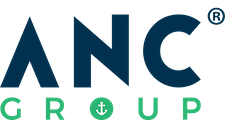Do you know how many TP methods are there? Do you know which TP method best suit your company as a group?
There are generally 5 important TP methods that you need to take note.
The first method is the Comparable Uncontrolled Price Method or C.U.P. The CUP method is the most straight forward TP method to compare prices but at the same time, the most difficult to apply. For example, if I want to compare the prices of an apple, to be fair, if I have a red apple, I will have to compare it to another red apple. But if I do not have a red apple, I cannot apply the CUP method to compare prices. The CUP methods is a very rigid TP method.
The next method is the Cost Plus Method. As the name suggest, the cost plus method is to compare the mark-up earned by a company to another company operating in the same industry. The Cost Plus method is easier to apply as compared to the earlier CUP method. The Cost Plus method is generally adopted by the manufacturing industry. So, if you are in the manufacturing industry, most likely you may adopt this method.
Similar to the Cost Plus method, the Resale Price Method also compare the mark-up earned by a company to another company operating in the same industry. So what’s the difference? The difference between the Cost Plus Method and the Resale Price method is that the Resale Price Method is generally adopted by the trading industry.
The next 2 TP methods that I’m going to discuss are known as Transactional Profit Methods. So what are the Transactional Profit Methods?
First, is the Profit Split Method. This method is rarely used due to the fact that it can be difficult to obtain the data required to apply the Profit Split method. Let me give you an example. You own 2 companies which are in the aircraft industry. One of the company design and built airplane engines. While another company design and built the body of the plane. Now, both companies have to work together in order to complete the aircraft. If you have been commissioned to built an aircraft lets say for 10 million dollars, and the cost of building the aircraft is 6 million, you have a profit of 4 million. The issue here is how are you going to split the profit of 4 million between the 2 companies. In order to ensure a fair profit split between the 2 companies, you have to look into other companies which are also in the same joint venture as your companies. So to find a joint venture similar to your companies can be extremely difficult.
The final TP method know as the transactional net margin method or TNMM is more widely used. This is because, the method only requires you to compare the profit margin of a company to another company operating in the same business environment.
There you have it, all 5 TP methods. There are some countries which allow taxpayers to adopt a 6th TP method provided that the method can be used to justify the pricing policy adopted by your group of companies.
